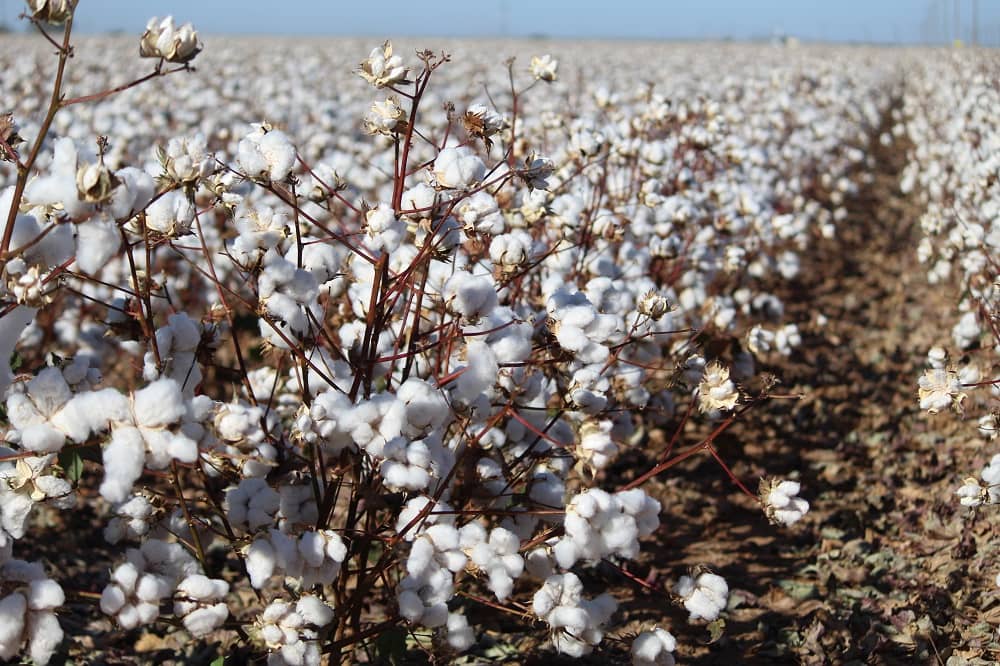
(File Photo/Deon Zumwalt)
Brazil Challenges U.S. Tariffs at WTO, Echoes Cotton Dispute
GENEVA, SWITZERLAND – Brazil has asked the World Trade Organization for consultations over new U.S. tariffs — 10% on all Brazilian products and an additional 40% on certain goods — circulated to WTO members on August 11. Officials say the measures violate U.S. commitments under the General Agreement on Tariffs and Trade (GATT) and the WTO’s dispute rules by imposing penalties without first pursuing settlement procedures.
The case recalls Brazil’s 2003 WTO challenge against U.S. cotton subsidies, a landmark ruling that ultimately reformed American export credit programs and secured a $300 million payment to Brazil’s cotton sector. That dispute demonstrated the effectiveness of using WTO channels to protect agricultural trade interests.
This time, Brazil’s farm exports — including soybeans, beef, sugar, and cotton — face increased costs in a key market. The government has opted against immediate retaliation, instead focusing on legal remedies and domestic support to buffer exporters. Agricultural leaders say the stakes are high but view the WTO process as the best path to resolve tensions and safeguard market access for rural producers.
One significant difference is that the WTO Dispute Resolution process is non-functioning as the U.S. has blocked, for the past five years, any new members to the Panel.
**********
Gildan–Hanes Merger Could Bolster U.S. Cotton Demand
LUBBOCK, TX – Two of the world’s largest basic apparel makers—Gildan Activewear and HanesBrands—have agreed to merge in a deal valued at $4.4 billion. The combination will create a global leader in activewear and innerwear, with a vertically integrated manufacturing network capable of producing massive volumes of cotton-based clothing.
For U.S. cotton growers, the merger could offer upside. Both companies source significant amounts of cotton for t-shirts, underwear, socks, and fleece products. With Gildan’s low-cost, vertically integrated mills and HanesBrands’ established retail presence, the combined firm is expected to increase production efficiency, expand distribution, and potentially raise demand for U.S.-grown fiber. Industry analysts note that cost synergies—projected at $200 million annually within three years—could make U.S. cotton more competitive in global supply chains, especially for higher-quality fiber used in premium innerwear.
The merger is set to close in late 2025 or early 2026, pending regulatory and shareholder approvals. While no sourcing changes have been announced, cotton producers will be watching closely to see if the combined company ramps up U.S. fiber use to support its expanded brand portfolio.
**********
Farmland Values Climb Again, Gains Vary by Region
NASHVILLE, TN – USDA’s 2025 state-level cropland value report shows farmland values continuing to rise, though at a slower pace than in recent years. Nationally, average cropland values increased 4.7% from 2024 to 2025, with Utah (+9.7%), Michigan (+8.2%), and Tennessee (+7.8%) leading the way. According to David Widmar with Agricultural Economic Insights (www.AEI.ag), all reporting states posted year-over-year gains.
Looking over the longer term, values have climbed steadily since 2018 after several years of declines. Since that low point, Kansas leads the nation with a 67% increase, followed by Nebraska (+55%) and Oklahoma (+52%). Eastern Corn Belt states like Ohio, Kentucky, and Tennessee have gained more than 50%, while Indiana and Illinois posted more modest growth of about 33%.
Over the past 25 years, annual average gains have been highest in the North Great Plains — South Dakota (+8.9%), North Dakota (+7.5%), and Nebraska (+7.4%). At that pace, Widmar says, South Dakota farmland has doubled in value three times since 2000, compared to twice for Indiana, which saw 5.3% annual growth.
While the pace of appreciation has cooled in some states — Iowa’s 5.1% increase in 2025 is below its 6.9% long-term average — cropland remains a strong long-term investment. Total returns are even higher when factoring in cash rental income and property tax considerations.
**********
Food Inflation Driven by Climate, Disease and Tariff Costs
NASHVILLE, TN – Food-at-home prices rose 2.2% in July compared to a year earlier, according to the latest Consumer Price Index from the Bureau of Labor Statistics. Eating out saw a larger 3.9% increase.
Some staples posted double-digit price jumps. Eggs led the gains, climbing 16.4%, followed by roasted coffee at 14.8%, beef steaks at 12.4%, and ground beef at 11.5%. Canned juices rose 6.8%.
Analysts point to multiple pressures behind the increases. Drought and other climate-driven production issues have reduced yields and pushed up costs for coffee, beef, and fresh produce. Avian flu has hit egg-laying flocks, tightening supply. Tariffs on certain imported goods are also contributing to higher costs for consumers.
The USDA forecasts grocery prices will rise 2.2% for 2025, consistent with historical trends, while food-away-from-home prices could increase about 4%. Analysts caution that weather, trade policy, and disease outbreaks will continue to influence prices into 2026.
**********
Cull Cow Prices Surge Amid Tight Supplies, Tariff Shifts
NASHVILLE, TN – Cull cow prices are hitting record highs as tight cattle supplies and strong ground beef demand push markets higher. The national dressed price for 85 percent lean cull cows topped $300 per CWT last week for the first time ever. Local Southeast auctions are reporting $160 to $190 per CWT.
USDA data show average U.S. retail ground beef prices reached $6 per pound in June, also a record. Reduced supplies of 85 percent lean trim over the past year have driven prices sharply higher. Much of this lean trim comes from cull cows or imports, which are blended with fattier fed cattle trim for ground beef.
Imports surged earlier this year, led by Brazil, but the U.S. raised tariffs on Brazilian beef to 76 percent last week, likely cutting shipments. That gap may be filled domestically, further boosting cull cow values, says Dr. Josh Maples, Mississippi State University Livestock Economist.
Producers now face a choice: cash in on historically high cull prices or hold cows for future calf production. Elevated slaughter could slow herd rebuilding into 2026.



